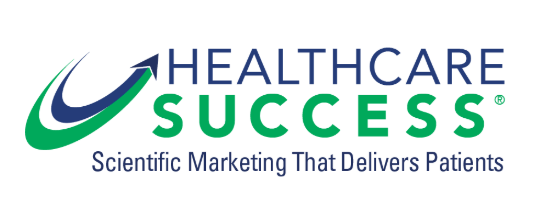
Connected TV, also called over-the-top media streaming, describes a new frontier for ad targeting and marketing campaigns. These terms are relatively new for businesses of all sizes, and healthcare organizations in particular have been slow to act on its opportunities. That’s why it’s a better time than ever for healthcare marketers to consider OTT marketing in your advertising.
Learn all about the terms, and how you can take advantage of over-the-top (OTT) or connected TV (CTV) advertising to stand out from the crowd.
Over-the-top advertising (OTT) and connected TV (CTV) are two terms that describe a new way to advertise. While these terms are often used interchangeably, there are subtle differences.
Technically speaking, OTT refers to any television content that is delivered over the Internet, rather than via broadcast, or cable/satellite TV subscriptions. In the early days, this “over-the-top” content was available solely on desktop computers and mobile devices.
Today, consumers can also watch television shows or movies on large screen televisions, through CTV devices, such as smart TVs, Apple TV, Amazon Fire Stick, or many modern gaming consoles.
Whatever the device used, users view content via streaming services such as Hulu or Sling. While some services offer premium, commercial-free streaming (e.g., Netflix), others rely on advertising as an additional revenue stream, opening up new opportunities for advertisers. The experience for viewers is a lot like traditional TV—but the experience for Healthcare marketing> goes far beyond traditional advertising.
Over-the-top advertising is one of the best ways to get in front of prospective patients where they are really. This is true of all age groups. While people aged 30-44 are the largest subscribers (85% of whom either currently subscribe to streaming services or have in the past), the 55+ crowd are also heavy streamers (particularly post-COVID). 62% of people aged 55-64 currently or have subscribed to streaming, compared with 47% of people ages 65+ (Statista).
From the viewer’s perspective, OTT advertising looks a lot like traditional ads, with some exceptions. For one, the television recording capabilities that come with premium cable services are often not available with OTT/CTV. Viewers cannot skip over the commercials—but because their viewing is so intentional, they may be less likely to anyway. Subscribers are choosing to consume a particular television show at a certain time and may be more likely to sit and view the program from beginning to end, commercials included.
Another difference between OTT/CTV and traditional television advertising? The ability to target and measure like never before.
OTT/CTV offers more targeting options than traditional advertising. While traditional media buying often makes assumptions on viewership based on time of day, location, or program type, OTT/CTV advertising uses data programmatically to target prospective patients and healthcare customers more accurately.
Targeting may come from sources such as IP-based device mapping or household categorization (which works by referencing other devices in the household). Marketing campaigns can reach audiences based on whether they’ve visited your website — and can target by age, gender, whether there are kids in the household, and much more. And targeting by location, time of day, etc. are still possible programmatically with CTV/OTT.
The most important thing you’ll want to know about any form of advertising: does it work? With OTT/CTV, you can have visibility into the entire customer journey. This may be done using IP-based device mapping, attributing conversions on IP-associated devices to CTV impressions, or checking video completion rates.
From there, you can fine-tune your advertisements based on what your target demographics are really choosing to watch.
Healthcare advertising is more competitive than ever before. And today, traditional television advertising just doesn’t see the ROI or insight most organizations would expect. With more and more prospective patients streaming internet-based TV daily, it pays to get in front of them where they are.
To do it right, you’ll need a team that’s at the forefront of this new world of Healthcare marketing and can help put your advertising dollars in the right places at the right time—and with an overall strategic marketing and creative vision.
For more information, or to get started with over-the-top or connected TV advertising, contact the OTT digital advertising team at Healthcare Success here or at 866-938-8016.

Stewart Gandolf
Chief Executive Officer at Healthcare Success
Stewart Gandolf, MBA, is Chief Executive Officer of Healthcare Success, one of the nation's leading healthcare and digital marketing agencies. Over the past 20 years, Stewart has marketed and consulted for over 1,000 healthcare clients, ranging from practices and hospitals to multi-billion dollar corporations. A frequent speaker, Stewart has shared his expertise at over 200 venues nationwide. As an author and expert resource, Stewart has also written for many leading industry publications, including the 21,000 subscriber Healthcare Success Insight blog. Stewart also co-authored, "Cash-Pay Healthcare: Start, Grow & Perfect Your Cash-Pay Healthcare Business." Stewart began his career with leading advertising agencies, including J. Walter Thompson, where he marketed Fortune 500 clients such as Wells Fargo and Bally's Total Fitness.
The original version of this page was published at: https://healthcaresuccess.com/blog/advertising/why-healthcare-should-care-about-ott-advertising.html
Founded in 2006, Healthcare Success is a respected, full-service brand performance marketing agency focused on healthcare and recognized as a thought-leader in the industry.
Patient reviews can make or break a business in this era of healthcare consumerism and online reputations. And they’re here to stay. More than 94% of healthcare ...read more
I (Stewart) love what I do in large part because of the smart people I continually get to meet and befriend. Jay Geer is another case in point. Perhaps ten years ago, his (then) assistant ...read more
Our work brings us in daily contact with healthcare professionals around the nation. To a person, these operating executives, administrators, managers, and doctors are justifiably ...read more
Direct mail is not dead.At a time when email inboxes are overflowing, how else can you reach prospective patients in your area without overwhelming them?In fact, a piece of healthcare-related ...read more